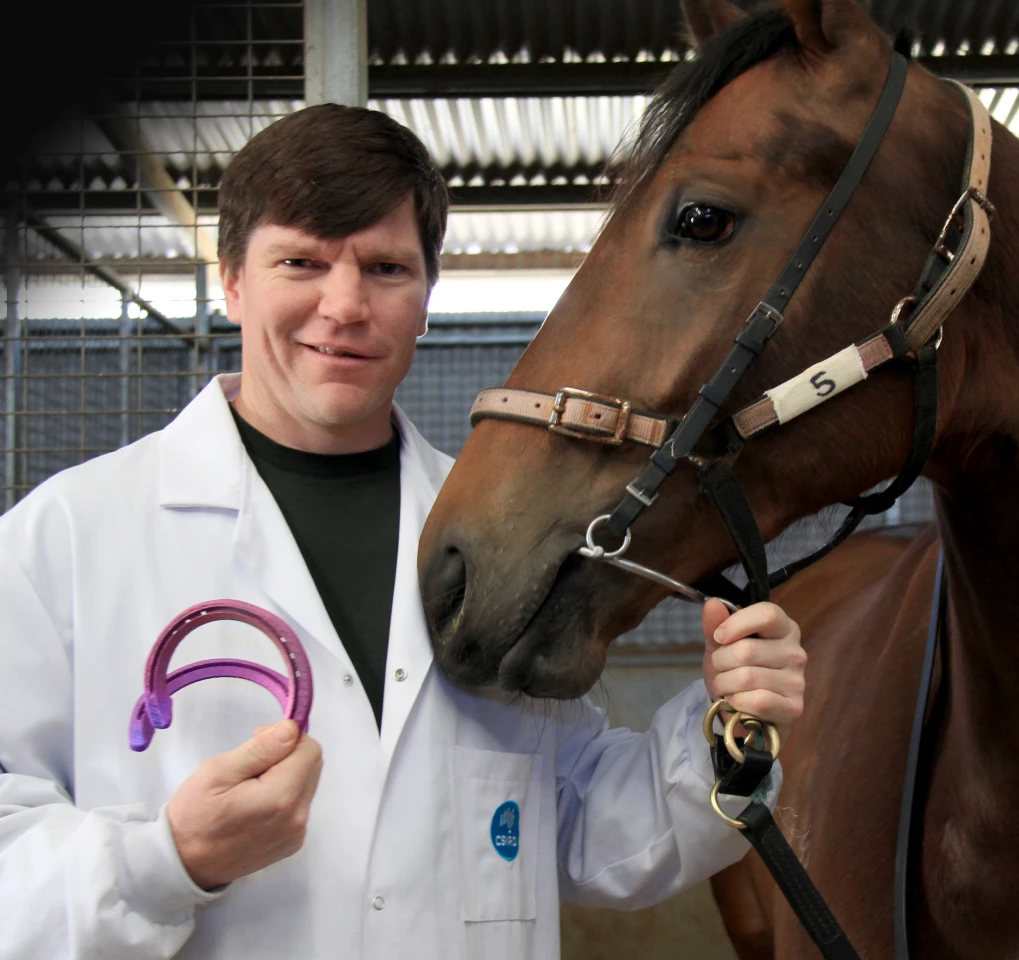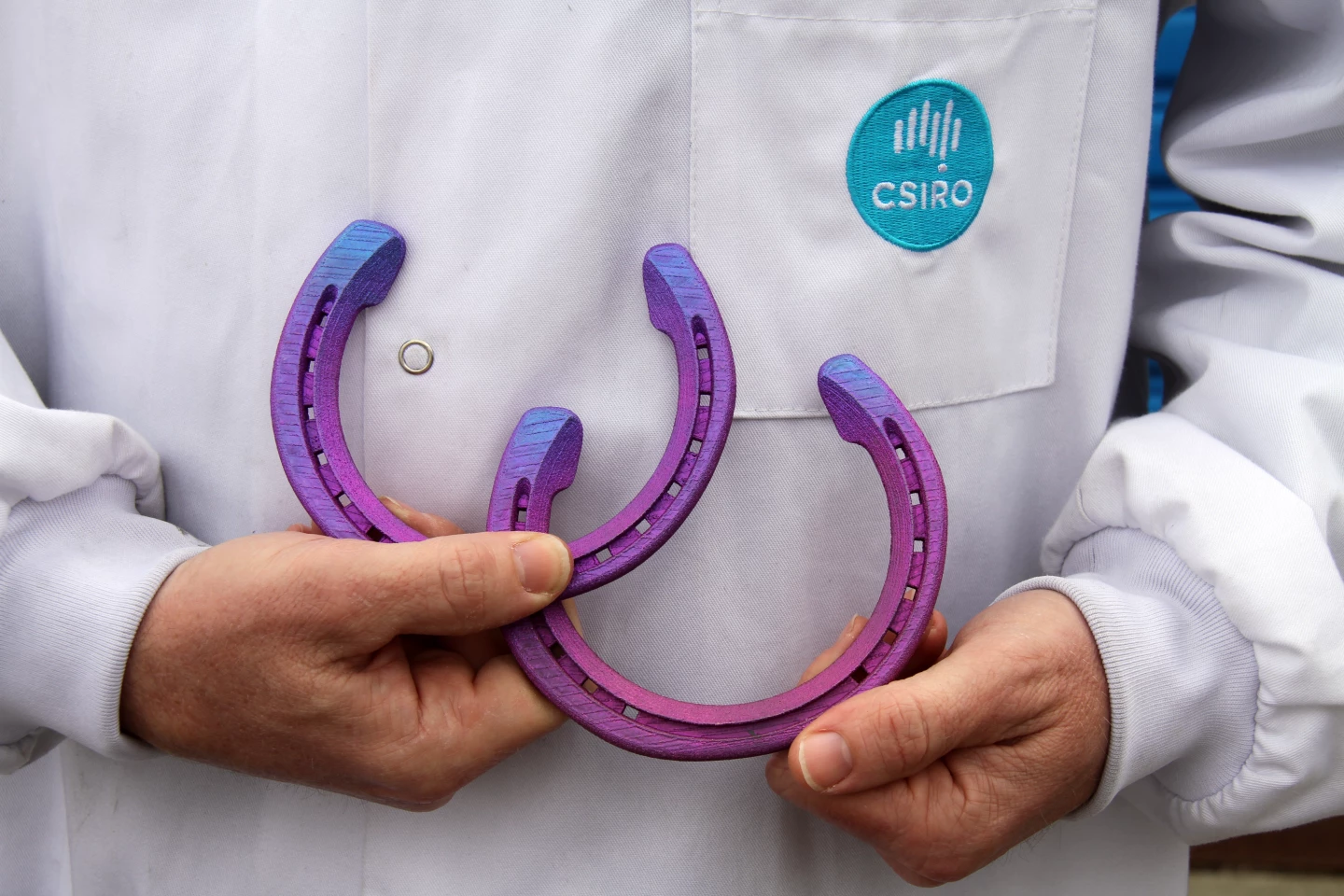Australia's Commonwealth Scientific and Industrial Research Organisation (CSIRO) has created a set of bespoke titanium horseshoes for a Melbourne race horse using additive 3D printing. According to CSIRO, this is a first for horse racing and demonstrates the potential for the technology.
Horseshoes are traditionally made of iron or steel, but they’re often made from other materials for special purposes, such as rubber, plastic, magnesium, or copper. For racehorses, aluminum is preferred because its much lighter than steel, which is important in a sport where every ounce can mean the difference between victory and defeat. Unfortunately, aluminum doesn't wear as well as steel and is also isn’t as light as it could be, adding as much as a kilogram (2.2 lb) to a horse’s weight.
Titanium shoes are half the weight of aluminum and much stronger, but titanium is very difficult and expensive to work with. The CSIRO’s use of 3D printing changes that by making the shoes much faster and at lower cost.

The horse, dubbed “Titanium Prints” by the CSIRO team, had its hooves scanned with a handheld 3D scanner. The digital scan, which took only a few minutes was of fine enough detail to provide a perfect fit for each individual hoof. The data was passed to 3D modelling software and the bespoke shoes were designed.
The digital plan was then fed to an additive process 3D printer. In this, the machine spreads a fine layer of titanium powder and an electron beam fuses the powder into a cross section of the horseshoe. The machine then rakes more powder over the area and the beam fuses another layer. This continues until the horseshoe is complete. The excess powder is then removed and the shoe is polished and hardened.
“Any extra weight in the horseshoe will slow the horse down,” says horse trainer John Moloney, the horse’s trainer. "These titanium shoes could take up to half of the weight off a traditional aluminum shoe, which means a horse could travel at new speeds. Naturally, we’re very excited at the prospect of improved performance from these shoes.”

The process allows more than one item to be printed at a time, so all four shoes could be printed at once if the printing bed is large enough. In all, the manufacturing of the titanium set took only a few hours, which is cheaper and orders of magnitude faster than conventional methods of forming the difficult to work metal.
"3D printing a race horseshoe from titanium is a first for scientists and demonstrates the range of applications the technology can be used for," says John Barnes, Titanium Technologies Theme Leader, CSIRO Future Manufacturing Flagship. “There are so many ways we can use 3D titanium printing. At CSIRO we are helping companies create new applications like biomedical implants and even things like automotive and aerospace parts. The possibilities really are endless with this technology.”
The video below shows how CSIRO’s additive printing process works.
Source: CSIRO








